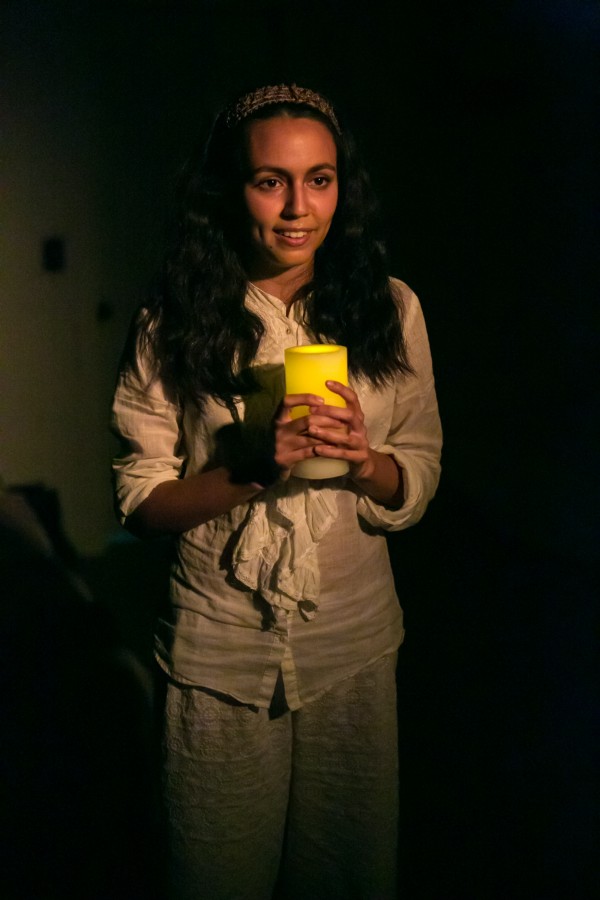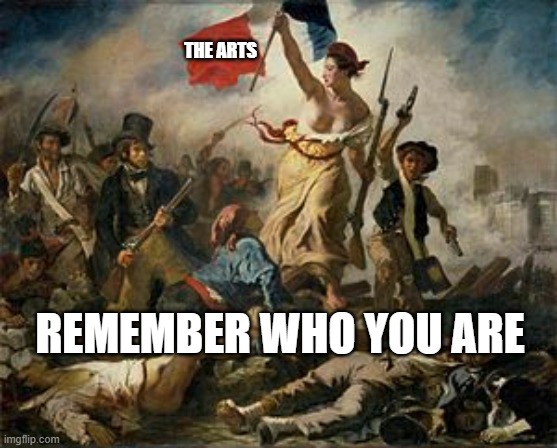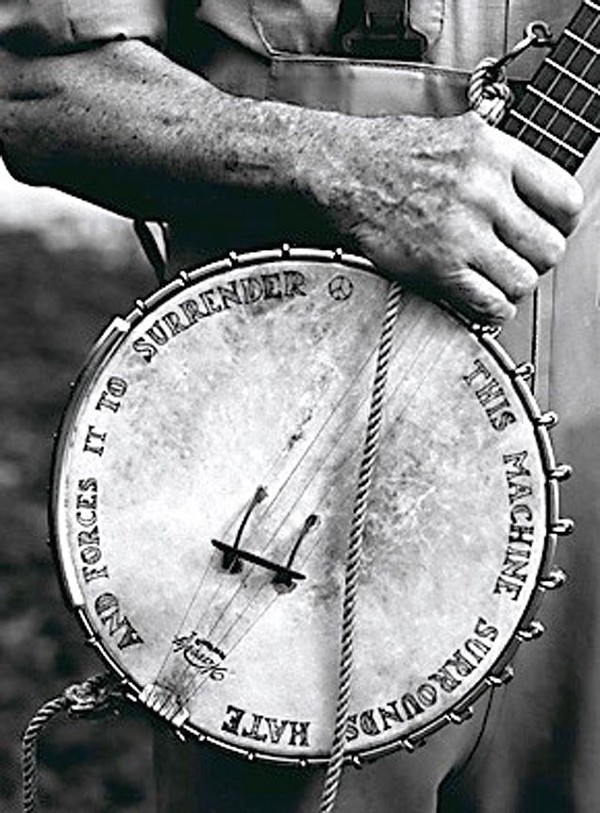Leading a nonprofit is, in many ways, like leading any kind of business. Some of these I learned growing up watching my father run his small business. For most of my adult life, I’ve simultaneously headed a small nonprofit and worked for nonprofits of varying sizes, experiencing both sides of the equation for more than two decades. I’ve seen what works and what doesn’t; I’ve seen leaders succeed brilliantly, fail spectacularly, and everything in between. One of the most neglected aspects of nonprofit leadership in the scramble to create public value and raise enough funds to pay the bills is personnel management — the leading part of leadership. Most of what makes a leader successful can be boiled down into one basic principle:
- You don’t buy loyalty with a paycheck. You earn it by treating people with respect.
Every other principle in this piece is about how to accomplish this. Why am I foregrounding loyalty? Loyalty means believing in the mission and in your leadership. It doesn’t mean staff will lie for you, or hide company errors– quite the opposite, It means they will protect the company by pointing out errors, by preventing future errors, and by insisting the company move forward in things like diversity and equity, worker protections, and healthy corporate culture. And it means they have trust in your leadership as someone who will take these issues seriously and with grace. People who are loyal to the mission, company, and leadership are people who will do their best work, who care about the company’s success, and who believe that what they do every day truly matters. This is only possible when staff feel respected, valued, and empowered.
2. Think of leadership as a service position.
A leader’s job is to remove roadblocks to success for their staff. This means providing everything you can provide that your staff needs, removing everything you can remove that impedes their productivity, and believing them when they tell you which is which. They will need things as broad as inspirational vision, effective strategic planning, and healthy, respect-driven corporate culture, and as simple and concrete as basic resources, like proper equipment and adequate time. There are many things they do not need, but the first thing you can remove (after tossing performance reviews into a flaming dumpster) is your approval for every single decision.
3. Give your staff ownership of the company and the work.
“Flattening the hierarchy” and “power sharing” are newly popular terms in company management that ultimately refer back to this principle, yet they are often poorly understood. There’s a lot of superficial power sharing, as well as a lot of misuse of the term. I’ve been in several situations where a board member asserted power over a staff project or process and called it “power sharing.” And I suppose technically it is a kind of power sharing when someone with more power takes power away from someone with less power. It’s just not the kind of power sharing that creates a respectful and healthy workplace.
Allow your staff the freedom to make decisions. Don’t interfere with their decisions or their processes unless absolutely necessary. Does the project work schedule violate the terms of the newly negotiated union contract? Necessary. Do you think the schedule would be better if everyone was required to work onsite, like it was in 1997? Unnecessary. Is the proposed venue’s ADA compliance sketchy and difficult (ie, a ramp in a dimly lit back alley or an unreliable elevator)? Necessary. Do you think the event should be at a venue you like better? Unnecessary.
Putting your foot down and requiring a staff member to make unnecessary changes to their products or to their processes creates disgruntled, unhappy, underappreciated staff. Unless the matter truly requires your intervention, give your opinion or guidance– you’re part of the staff, after all– and back off. Empowering staff to make their own decisions is meaningless if you’re nagging them to change their minds for weeks afterward, or reacting to setbacks with, “I told you this would have been easier if you had used my method” instead of actual help.
Again, trust their expertise and always remember that you’re in service to them. “I disagree for the reasons I gave earlier, but I trust you, and this is your project. What do you need from me to get this done?”
4. Respect your staff’s expertise.
This doesn’t mean complimenting their work. “Great job!” or “You’re so good at this” only go so far with your staff if you treat their opinions dismissively and if you routinely override their decisions. Your staff all know more about their positions than you do. In fact, it’s their job to know more about their work than you do. Work hard to create an environment in which they feel encouraged to disagree with you. Not an environment where it’s “ok” to disagree with you, or an environment where they feel “safe” disagreeing with you. You don’t create loyalty by doing the barest minimum. An environment where disagreement is encouraged means that you are sincerely grateful for their ability to spot problems and ensure success, not begrudgingly “OK” with disagreement. Take their opinions very, very seriously, because if they’re disagreeing with you about their area of expertise, it’s almost certain that they’re right and you’re wrong. Respect their knowledge and experience, and they will reward you in 100 ways.
If you must override them because you have information that they lack, trust them enough to tell them exactly why they’re being overridden. Only withhold information if it’s absolutely necessary– if there could be clear negative consequences for revealing the information. You can’t reveal employee discipline data or health information, for example. But it’s far too common that the reason is simply “Because I want to; they’re wrong and I’m right,” and leadership withholds that because they don’t trust staff, fear staff blowback, or are just powertripping (one of the surest signs of a weak leader).
There’s no faster track to employee disgruntlement than a lack of transparency. Staff will rightly read a lack of transparency as a lack of respect, and no amount of “Ayani has some really great ideas about the project!” will ever repair that.
It’s important to remember that staff know more about their work at your company than you do. But it’s critical to remember that they know this as well. Your staff knows without question that they know more about their jobs than you do, and they note every time you dismiss, minimize, brush away, or override their expertise.
5. Communicate clearly, directly, and honestly.
Your staff are busy people. Don’t pussyfoot around or be coy with your language. Indirect language isn’t “professional.” It’s timewasting. Show your staff the respect they deserve by being clear and direct with them.
One of the worst things you can do is lie to your staff. They either know immediately that you’re lying (remember: they know more about their jobs than you do) or they will soon find out, and you will immediately– and potentially permanently– lose their respect.
Give your staff the information they need as quickly and as clearly as possible. Do not lie or exaggerate. Don’t make empty promises. Don’t flatter. Don’t prioritize appeasing people over respecting them. Give them the information they need to get their jobs done, clearly, directly, and as quickly as possible.
And yes, don’t call a meeting for something you could send in an email. It’s popular meme fodder for a reason.
6. Wear your authority with ease.
Nothing says “I’m insecure in positions of authority” like powertripping– yelling, needlessly withholding information, lying, or refusing to allow staff to voice their opinions. A strong leader engages staff as equals, leads with integrity and honesty, and doesn’t get snippy or defensive when a staff member disagrees. And when something goes wrong, blaming staff, yelling at people, or otherwise losing your cool is the worst thing you can do. Approach these moments with a focus on problem solving, not on laying blame. Nowhere is leadership more about service than in moments of crisis. Reassure your staff to the best of your ability, always be as honest and transparent as you can, and redirect everyone’s attention– including your own– on problem solving.
7. Admit when you’re wrong.
Because they all already know it. Bluffing just makes you look foolish. Take responsibility for your mistakes. Apologizing without any further action is tantamount to lying to your staff. The apology itself is the least important part of taking responsibility. The most important part is repairing any harm you may have caused, and making a sincere attempt to change your behavior so similar mistakes don’t happen in the future. We all make mistakes. React to your mistakes in a way that shows respect for your staff and their experience in the workplace you lead.
8. Don’t be afraid to make the hard decisions.
Part of the service of leadership is helping people adjust to new positions by giving them the education, guidance, and resources they will need to succeed. It’s also about working with underperforming staff to understand the root cause of the underperformance.
When a staff member underperforms, there’s a need that isn’t being filled somewhere, and it’s not necessarily located in the underperforming staff member. Perhaps the workload is too much. The pressure to continually increase productivity over the past 40 years (especially as compensation has continually decreased in real dollars during the same period) has reached its upper limit, and we’re in the position now of experiencing the backlash. There are labor shortages in every field whose workers have been predicting this for years, like food service and education. Is your staff member actually underperforming as compared to the previous staffer who held that position? Or did the previous staffer leave because they were burned out, and the new staffer is burning out right before your eyes? Is the real problem that you’re not providing what the staffer needs to succeed?
Sometimes a staffer really is in over their heads, and needs to be given robust professional development, reassigned, or even released. But often, the problem lies elsewhere and therefore won’t be solved by just putting someone else in that position. Respect your staff and serve their needs by working to discover the real reason for underperformance problems. It may be as simple as setting more realistic performance metrics. Talk to your staff, and believe what they tell you.
This is just a few of the basics of successful nonprofit leadership, focusing primarily on personnel management. When in doubt, always remember:
Healthy workplace culture is created through service-oriented leadership and respect.



























